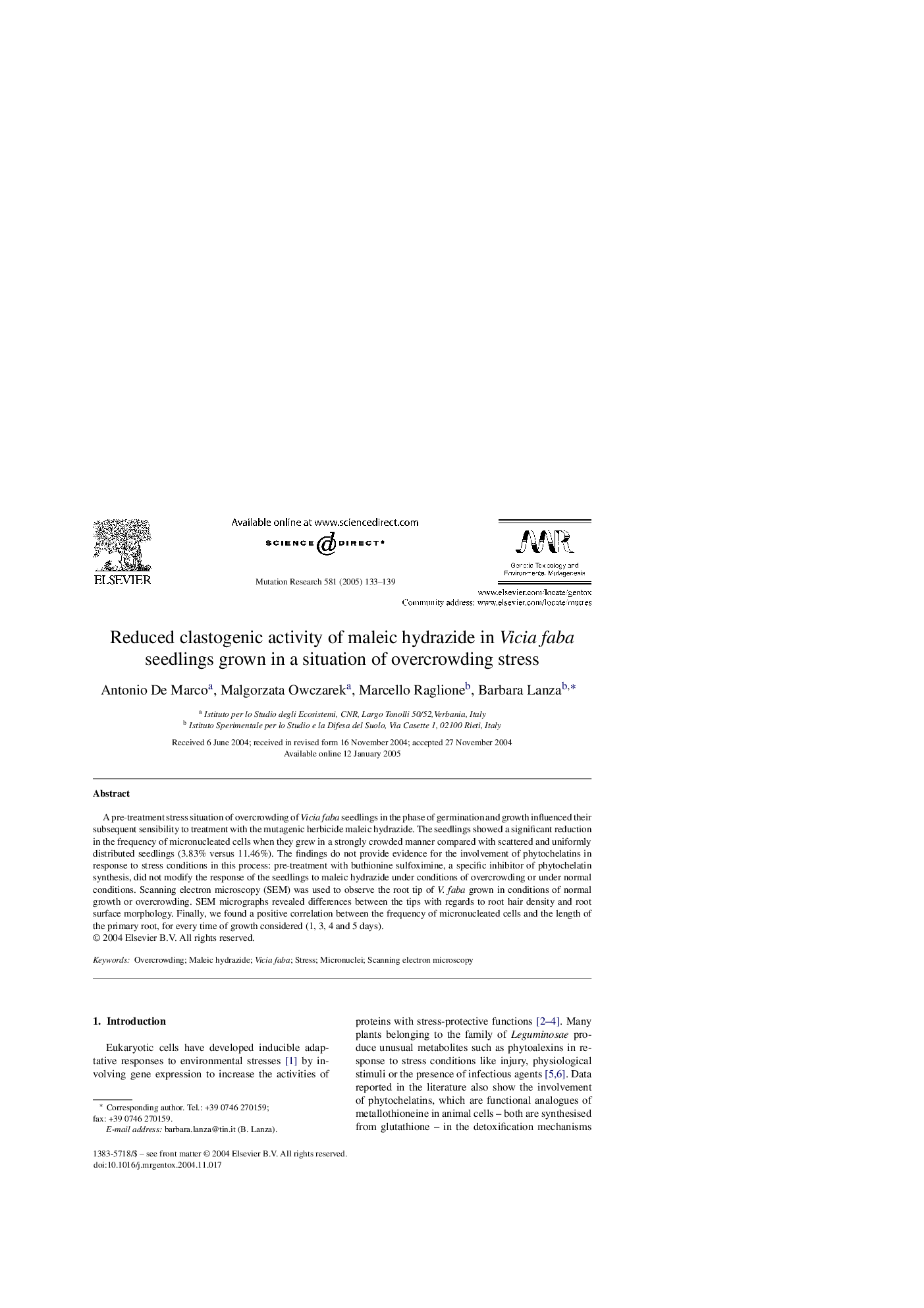| Article ID | Journal | Published Year | Pages | File Type |
|---|---|---|---|---|
| 9910159 | Mutation Research/Genetic Toxicology and Environmental Mutagenesis | 2005 | 7 Pages |
Abstract
A pre-treatment stress situation of overcrowding of Vicia faba seedlings in the phase of germination and growth influenced their subsequent sensibility to treatment with the mutagenic herbicide maleic hydrazide. The seedlings showed a significant reduction in the frequency of micronucleated cells when they grew in a strongly crowded manner compared with scattered and uniformly distributed seedlings (3.83% versus 11.46%). The findings do not provide evidence for the involvement of phytochelatins in response to stress conditions in this process: pre-treatment with buthionine sulfoximine, a specific inhibitor of phytochelatin synthesis, did not modify the response of the seedlings to maleic hydrazide under conditions of overcrowding or under normal conditions. Scanning electron microscopy (SEM) was used to observe the root tip of V. faba grown in conditions of normal growth or overcrowding. SEM micrographs revealed differences between the tips with regards to root hair density and root surface morphology. Finally, we found a positive correlation between the frequency of micronucleated cells and the length of the primary root, for every time of growth considered (1, 3, 4 and 5 days).
Related Topics
Life Sciences
Biochemistry, Genetics and Molecular Biology
Cancer Research
Authors
Antonio De Marco, Malgorzata Owczarek, Marcello Raglione, Barbara Lanza,
